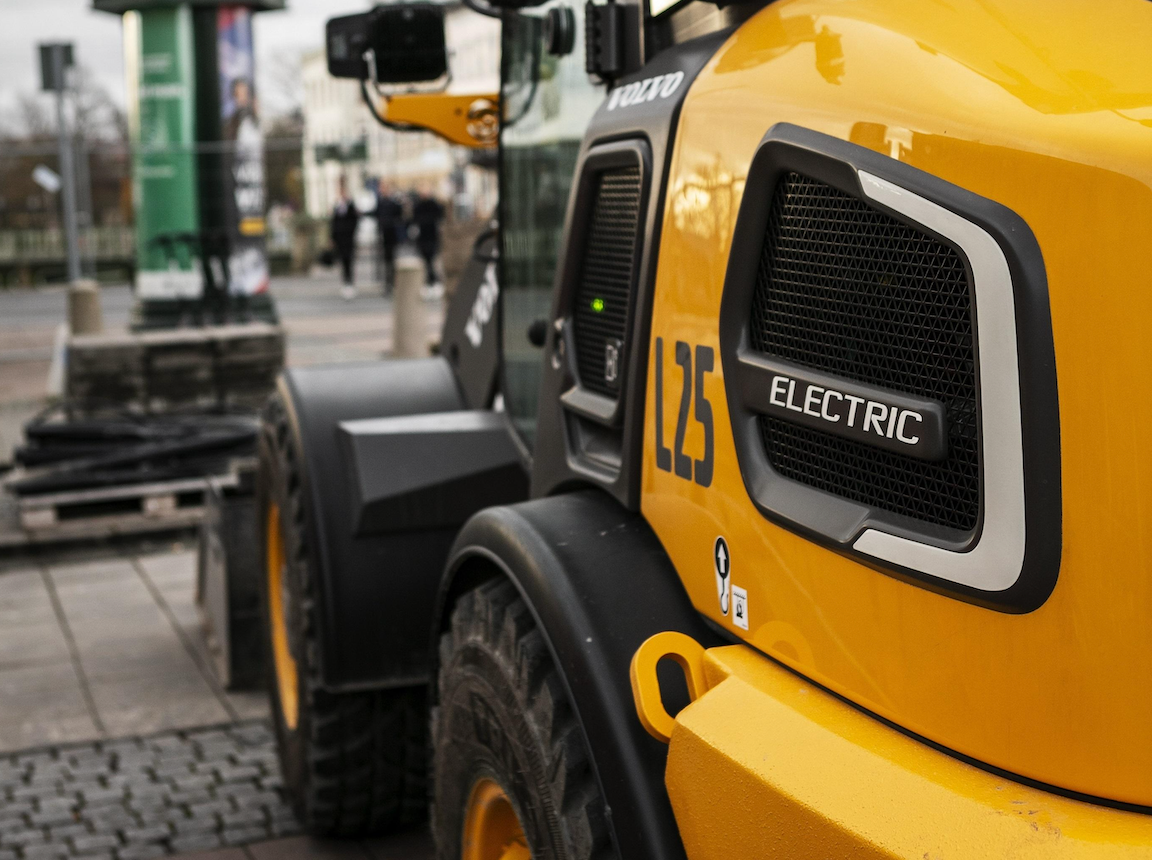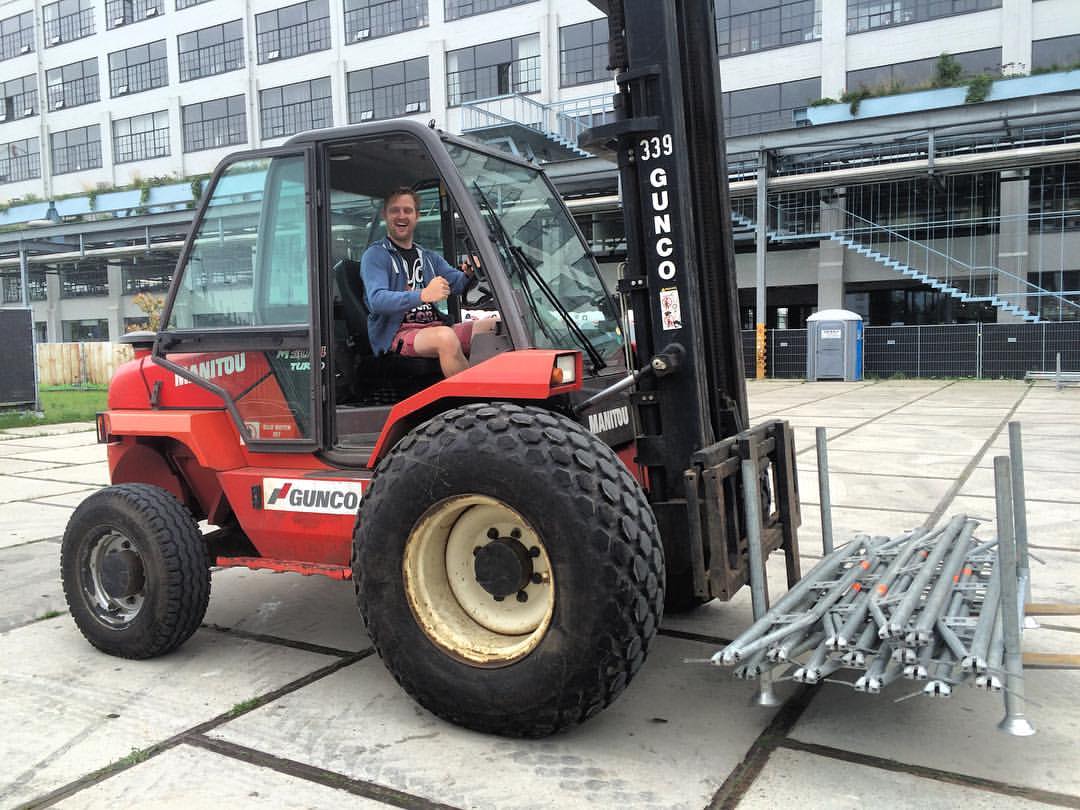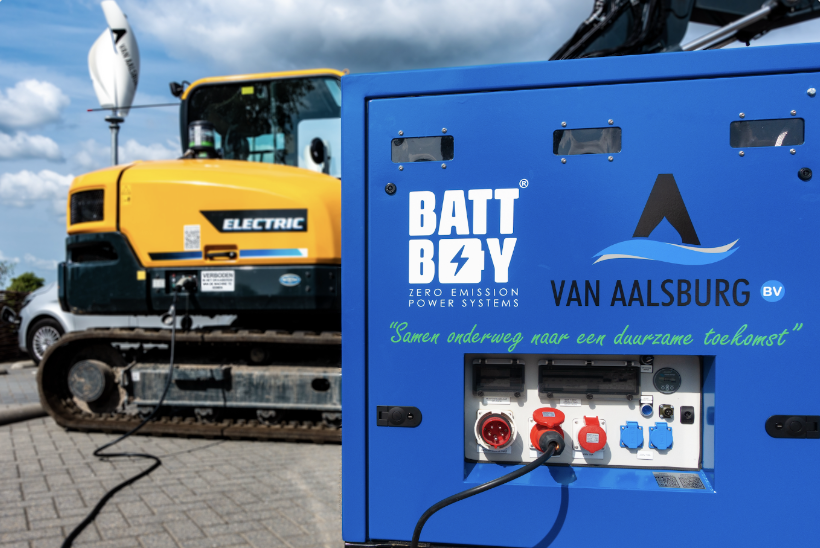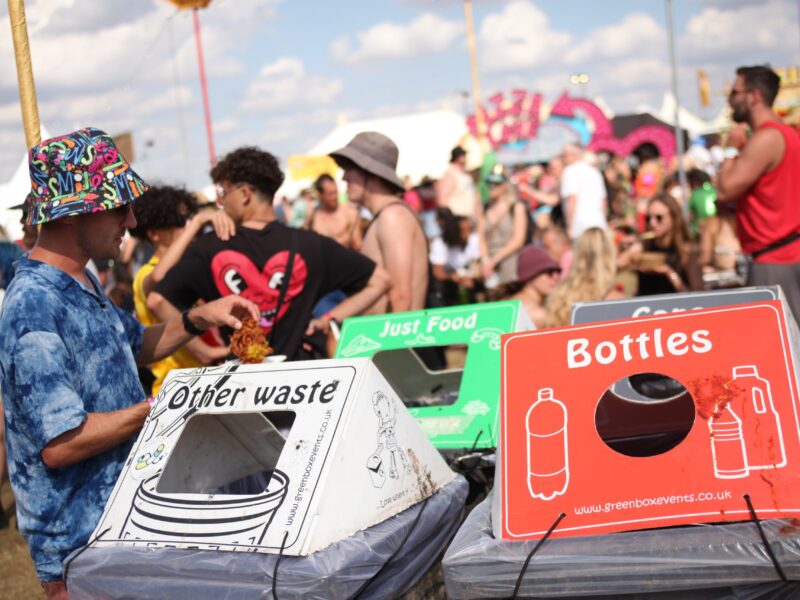
Building towards climate neutral festivals: The shift to zero-emission construction equipment
This article was originally published via Green Deal Circular Festivals and can be found here.
In this article the current state, the advantages and the challenges of switching to zero emission construction equipment for outdoor events and festivals, are explored.
Within the Green Deal Circular Festivals initiative, 53 festivals from 18 European countries have embarked on a collaborative journey to achieve as close to circular and climate-neutral events as possible by 2025. Central to this initiative is the co-developed model that defines what circular and climate-neutral festivals are co-developed model that defines what circular and climate-neutral festivals are.
For clarity the model delineates overarching goals across five key themes: Energy, Materials, Water & Sanitation, Food & Drinks, and Travel & Transport. This article will delve into the Travel & Transport theme, focusing specifically on the often overlooked, but increasingly pressing issue of the transition to zero emission construction equipment.
Construction equipment such as; rough terrain forklifts (often referred to as Manitous), rough terrain golf carts (gators, utility vehicles, buggies) and tele-handlers (Lulls, or Zoom booms) play a crucial role in festival setup and take down. However, the prevalent use of fossil fuels to power this machinery poses a significant obstacle to achieving climate neutrality. However the fossil driven versions of this machinery not only cause GHG emissions, other key disadvantages are becoming increasingly problematic – highlighting the urgent need for change:
- nitrogen emissions (biodiversity and environment)
- particulate matter (health)
- noise disturbance (health, environment and local community)

What Can Festivals Do About This?
To address these challenges, festivals can take immediate steps to mitigate their impact in these areas. As an interim step on fossil GHG emissions festivals can transition from fossil diesel to sustainable biofuel (HVO-UCO/Tall) for existing equipment. This is only a viable step as long as the zero emission solutions are not available, and only because this step can be taken today, this fuel can be used by all current diesel machinery (drop-in fuel) and prevents fossil fuel from being used and prevents approximately 90% fossil CO2e emissions. For nitrogen, particulate matter and noise pollution, this temporary solution does very little, to none. There is also the additional costs of HVO-UCO over fossil diesel which need to be considered, but as a first interim step there is no easier quick win.
However, the real long term solution – where full immediate effort should go to – for all the above mentioned disadvantages of fossil combustion driven construction equipment, lies in the full transitioning to zero emission construction equipment. Which currently means fully electric – or maybe later green hydrogen.

Current Situation
While the transition to electric construction equipment may seem ambitious, it is clearly necessary and, luckily, increasingly feasible. Fully electric construction machinery starts to become piecemeal available in Europe. Mainstream rental companies for now, still have very limited availability, especially when it comes to the heavier types of lifting equipment like rough terrain forklifts. The building sector is a little further ahead in this. Mostly due to the fact that many urban building permits are more and more demanding zero/low emission, low noise, low local emission building equipment already.
This has opened a possible cooperation window, where the festival sector can make use of the electric shovels already in use in the construction sector, where at the same time facilitate and increase the use of zero emission building equipment. This way once again – like with large scale mobile batteries – the event and construction sectors, can catalyze and help speed up eachothers transitions.
Pilot Program: Zero Emission Construction Equipment for Festivals and Events
That is why the ‘Into The Great Wide Open’ festival in Netherlands, as part of the Green Deal Circular Festivals, has initiated a pilot project that runs in 2024 to explore the viability of zero-emission construction equipment in practice.
Partnering with the “construction-sector’s zero emission building equipment sharing platform” Emission-0. Who will facilitate a large part of the zero-emission machinery needed. Bringing construction companies as suppliers and festivals as zero-emission equipment users, together. And in doing so unlocking the available zero-emission machinery for the festival sector, quicker.
Top Sector Logistiek is also partner in this pilot. Alongside providing financial support, Topsector Logistiek will be responsible for measuring emissions impact, collecting lessons learned, and handling the reporting. The pilot aims to fully electrify all construction operations at ITGWO 2024, setting a strong precedent for future events and construction sites. It also contributes to practical insights into achieving climate-neutral, location-based building.
The pilot project seeks to answer critical questions regarding the (1) overall feasibility at event location, (2) feasibility for the sector, (3) additional driver knowledge requirements, (4) additional costs or savings, and (5) new user patterns of zero-emission construction equipment.
Preliminary Lessons
Early insights from the pilot development phase show some first lessons:
- Zero emission festival construction for some frontrunner is clearly possible, and even brings many co-benefits, it is however not without hurdles.
- Extra handling due to minimal supply and different suppliers is a first challenge
- Higher rental costs – currently almost double – of electric machinery that can handle the same workload as its fossil diesel guzzling counterparts is another.
- The electric machinery needs to be charged, which needs enough (green) power on site, time to (slow/quick) charge and a clear plan and knowledge with the operator crew.
- Zero emission transport (E-trucks) of the construction machinery itself, to and from the festival site – especially if the distances are longer – is still underdeveloped, which brings extra costs and extra logistics.
Some of the clear preliminary benefits are:
- much lower onsite fuel/energy costs – (kWh vs. diesel costs)
- No engine noise
- No GHG emissions
- No Particulate matter emissions
- No nitrogen oxide emissions
- No oil leakages.
The big challenge that became painfully clear was that, although zero emission building of festivals is very possible, to have the whole sector transition to zero emission construction equipment is far from possible at the moment. This is mainly due to a lack of availability of sufficient supply in numbers of zero emission construction machinery.
How to make the necessary transition happen quickly – Call to Action!
The above mentioned technical, logistic and financial hurdles need to be figured out in pilot programs and by early adopters. This is essential for fast paced innovation and progress on this topic. However, to speed up the transition towards sector wide adoption of zero emission construction equipment, a collaborative effort is required by festivals, events, suppliers, and governments:
- Governments need to set clear European and National minimum sustainability standards for the festival and event sector. This will create the necessary long term investment certainty for festivals and events but mostly for suppliers. They are the ones that need this investment certainty to be able to make the necessary large scale investments into sufficient zero emission equipment. Also, support the early adopters of zero emission equipment financially to pave the way, for the others and create a substantial market to drive the costs down through scale.
- Festivals and events need to start demanding zero-emission construction equipment from their suppliers and rental companies. Allocate necessary funds, including long term offtake strategies with suppliers. Without customer demand, suppliers will feel very little incentive to start investing in zero emission equipment.
- Suppliers and rental companies need to drop the ‘only profit counts’ and ‘ only when the customer asks for it’ business philosophy and start adopting a long term sustainability vision. Like in every sector, the suppliers and rental companies need to show leadership by going full in on zero emission alternatives. And in doing so enable their own and the festival and events sector to transition to climate neutral and zero emission industries.
- Cross sector cooperation. We must realize that we can and need to collaborate more between sectors. The festival and construction sector have proven to be complementary in many aspects. In this case, construction machinery owned by building companies often stands idle during weekends and holidays. Festivals need this same machinery at exactly those periodes to build their festival locations. By making the connection between these sectors – like Lab Vlieland and the Emission-0 platform are doing in their pilot in 2024 – the needed zero-emission equipment is made available much earlier and in larger quantities for festivals, then otherwise would have been possible.






